From Mask Mandates to Omicron, Ed Secretary Cardona Finishes a ‘Very, Very Difficult’ First Year
By Linda Jacobson | January 13, 2022
The former teacher gets high marks for building bridges to disenchanted educators and shepherding billions of dollars in federal relief funds to schools. But critics say his department has been slow to meet a fast-changing pandemic and reluctant to embrace a newly visible constituency: parents.
When Education Secretary Miguel Cardona toured South Bend, Indiana’s Madison STEAM Academy in September, he made a quick impression on the district’s superintendent, C. Todd Cummings.
Cummings remembers the secretary’s interest in COVID protocols, the facility’s STEM makerspace, and that he spoke Spanish to students at the bilingual school. By the time the visit ended, he came away feeling like he could pick up the phone and call Cardona if needed.
“He’s done a lot to make the department more approachable,” Cummings said. “He understands running a district, but he also understands teachers in the classroom.”
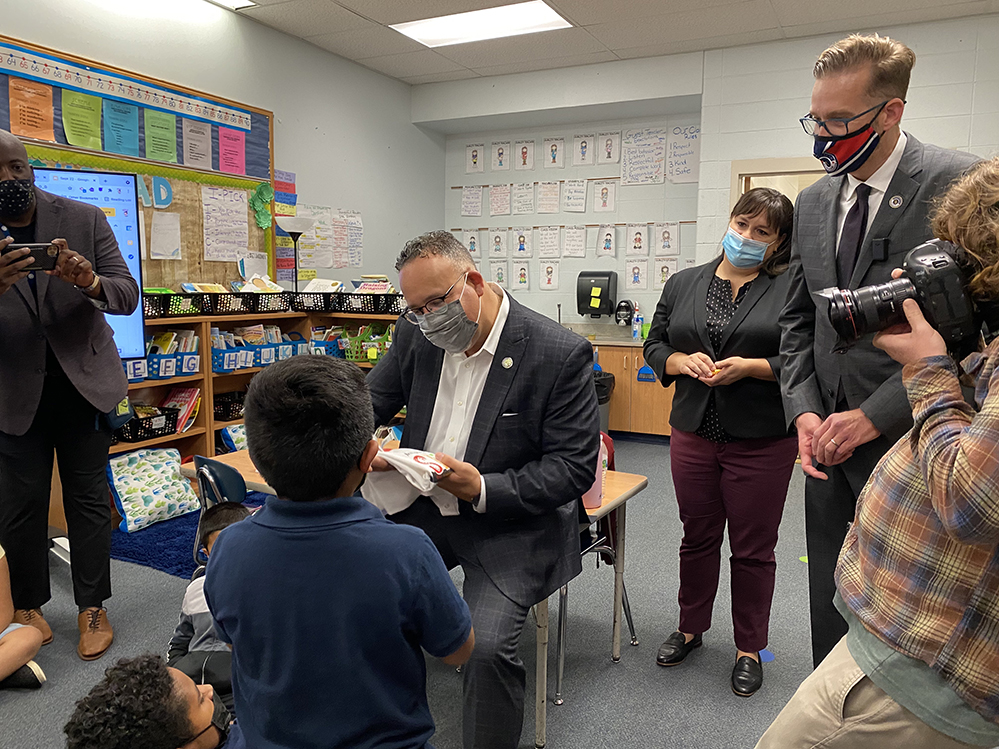
Having one of their own helming the U.S. Department of Education has gone a long way toward mending the fractured relationship between district leaders and the agency that existed under Cardona’s predecessor. Betsy DeVos was the consummate outsider. She warred with unions, made comments that many teachers found insulting, and attempted to direct relief funds meant for the public system to private schools. In contrast, when the former Connecticut state chief meets with superintendents and school leaders, “he’s talking shop” on everything from bell schedules to graduation rates, said Ronn Nozoe, head of the National Association of Secondary School Principals.
But almost a year into Cardona’s tenure, and with the pandemic showing no signs of abating, his department has sometimes struggled to keep up. COVID-19 has thrust the agency into the public eye almost as much as the Centers for Disease Control and Prevention, and, like the CDC, it has often come under fire for being slow to respond to a fast-changing virus. To some, Cardona’s camaraderie with educators helps explain why he has sometimes appeared reluctant to embrace another constituency, whose power and visibility has grown with the pandemic: parents.
Sarah Carpenter, executive director of The Memphis Lift, a nonprofit that trains parents to advocate for their children’s educational needs, said she hasn’t forgotten that parent leaders weren’t asked to speak at Cardona’s first virtual summit on reopening almost a year ago.
“They know we’re here, and we’re just not accounted for,” she said, adding that parents “in those communities where this pandemic hit the hardest” should have had a voice. A June event focusing on equity didn’t feature parents either.
Cardona hasn’t ignored parents, and often reminds the public that his two teenage children, still attending public school in Meriden, Connecticut, have endured their own disruptions in learning. His first act as secretary was to write a letter to parents and students acknowledging the hardships caused by the pandemic, and he has urged schools to rebuild trust with families.
More recently, when schools began to shift to remote learning because of the Omicron variant, Cardona told The 74, “Our parents have done enough.” That same week, the announcement of another round of grants to state family engagement centers came with Cardona’s statement that, “Meaningful parent engagement … has never been more important.”
But observers say his messages tend to emphasize teacher well-being over student recovery. When the department last month urged districts to use federal relief funds for teacher pay raises and hiring bonuses, Marguerite Roza, director of Georgetown University’s Edunomics Lab, said “the balance feels a little off.”
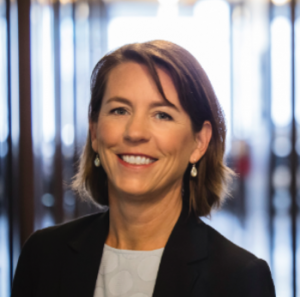
The pandemic has mobilized many parents to take a more central role in their children’s education, and their frustration over extended school closures likely tipped the Virginia governor’s race in favor of Republican Glenn Youngkin.
Keri Rodrigues, president of the National Parents Union, has tried to drive that point home. She regularly participates in “stakeholder” meetings with the department, and shares monthly parent survey data with Christian Rhodes, chief of staff for the department’s Office of Elementary and Secondary Education. But she described the department’s parent engagement efforts as a “box-checking exercise.”
“That’s not what this moment calls for. It calls for listening to people’s pain,” she said. “Parents expect to be engaged on a whole new level because we had to hold it down for [schools] while they weren’t there.”
‘Not a slow-moving moment’
Leaders in education said Cardona has shown skill in managing the mountain of challenges he faced when he entered the job: more than half of schools still not fully open, expectations that he quickly reverse the previous administration’s stance on students’ civil rights, and low morale among what Nozoe called the department’s “beat-down career staff.” Cardona, he added, is trying to rebuild an agency that DeVos once said shouldn’t even exist.
Cardona said his top priority has been helping schools reopen and stay that way. Others credit him with steering billions in federal aid to states and districts on a short timeline.
“They’ve made a huge amount of progress in a very, very difficult time,” said Linda Darling-Hammond, president of the California State Board of Education and president and CEO of the Learning Policy Institute, a think tank. She led President Joe Biden’s transition team for education and supported Cardona as the nominee.
She specifically noted his team’s work to get the American Rescue Plan funding for schools “out the door with guidance and support for how to spend it” and early efforts to make the CDC’s “wonky and mysterious” school reopening guidelines more accessible to educators. Recent confusion over whether the agency’s updated quarantine guidance applied to schools, however, drew fresh criticism.
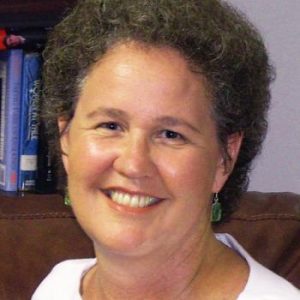
Some noted that communication from the department often hasn’t matched the urgency state and district leaders have experienced during the pandemic.
In November, the department said it was OK to use relief funds to pay for alternate forms of transportation for students in the face of a bus driver shortage. But that was a month after New York Sen. Kirsten Gillibrand, a Democrat, asked for the guidance, and two months after Massachusetts Gov. Charlie Baker called in the National Guard to drive students to school.
In mid-December, the department issued a draft document on jumpstarting school accountability systems, but state officials started calling for that in September.
“They are slow moving,” said Roza, “and it’s not a slow-moving moment in public education.”
In an interview with The 74, Cardona said the department responds with guidance when “we hear from the field.” He noted the staff’s efforts to host multiple webinars and respond to questions from educators, but acknowledged that guidance from the department has sometimes lagged. He vowed to do better. “We have to stay ahead of things, and we’re going to continue to improve communications.”
‘More influence’
As he nears his first year as a cabinet member, Cardona reflected on what the department has accomplished under his leadership.
While Omicron has led to short-term closures of as many as 5,400 schools, according to a frequently updated tracker, Cardona noted that in-person learning had hit 99 percent of schools by early December. And he takes pride that the department is addressing problems with Public Service Loan Forgiveness — a federal program meant to encourage students to go into nonprofit and public sector jobs, like teaching, in exchange for debt relief. Under DeVos, the department denied most requests for relief, and borrowers complained that loan servicers gave bad advice on how to meet the program’s strict criteria. The department’s management of the program prompted the American Federation of Teachers to sue. Since Cardona started, the department has wiped out roughly $12.7 billion in college debt, including almost $2 billion for the public service program.
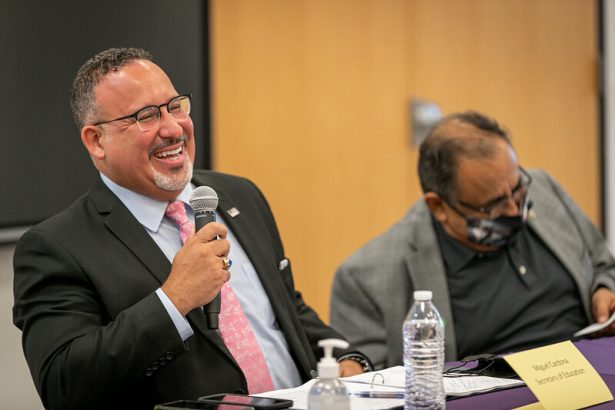
“Not only are we providing some loan forgiveness, but we’re fixing the systems that led to the problems that we have now,” he said, adding that he wants to continue to “make higher education more accessible to more students without having to be tethered in debt for the rest of their lives.”
Before Cardona was confirmed, there was speculation he’d be overshadowed by Biden’s White House advisers, who included two former high-level education officials from the Obama administration. More recently, Rodrigues quipped that Becky Pringle, president of the National Education Association, likely has more pull with the administration than Cardona.
Conservative pundits have sized him up as “inexperienced in Washington.” Rick Hess, director of Education Policy Studies at the American Enterprise Institute, described him as “under-the-radar, except when he’s been waving the flag for partisan administration objectives.”
But those who support those objectives say Cardona has clout with the president.
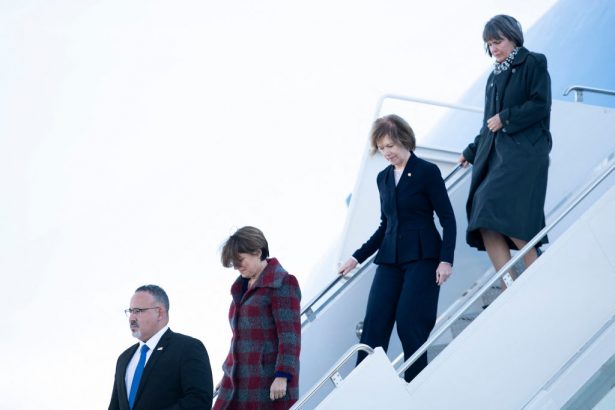
“I think with every passing day, he has more and more influence with the White House,” said American Federation of Teachers President Randi Weingarten, who first met Cardona when he was a teacher and now has a friendly competition with him over who has visited more states and schools over the past year. By late December, she’d hit 28 states; he’d made it to 25.
She said he advocated with the White House for changes to the loan forgiveness program and for putting teachers second in line to receive the first wave of COVID-19 vaccines, after health care workers.
Interestingly, given the coziness many of his critics assume Cardona enjoys with the unions, he has had trouble with the one representing employees in his own department.
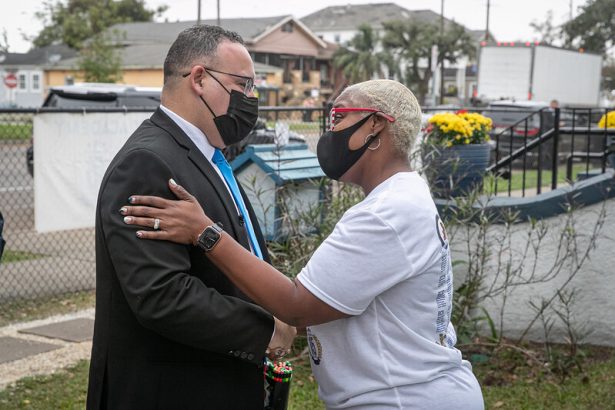
‘The huge political divide’
In early December, the Federal Labor Relations Authority found the department guilty of 14 violations of labor law — actions that date back to 2018 when DeVos suspended the employee union’s collective bargaining rights. A 2018 survey of federal employees showed that morale within the department had declined far more than in any other agency. Those grievances have continued under Cardona, according to Cathie McQuiston, deputy general counsel with the American Federation of Government Employees.
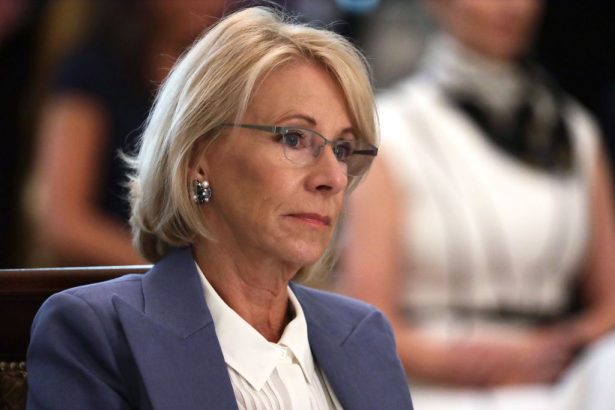
The complaints involve inconsistent policies for working remotely, employee evaluation procedures and denying staff union representation when they have a dispute.
Under DeVos, the department was “paraded out as an example to other agencies of the kinds of things they should be doing in the Trump administration,” McQuiston said. “There has to be a political will to come in and say, ‘We’re not doing that anymore.’ At education, we struggle to get that commitment.”
According to a department spokesperson, efforts to resolve the complaints are ongoing and the agency is “committed to making sure it is a great place to work.” Both sides are scheduled to meet Thursday.
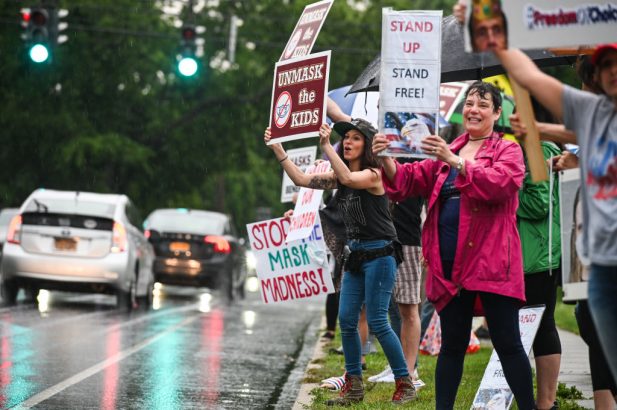
While addressing internal issues, Cardona was hit with a summer storm of public controversy over mask mandates and school equity initiatives. Superintendents were targeted with death threats, brawls broke out at school board meetings and school leaders tried to make sense of contradictory court rulings and mandates over masks.
“I wonder whether he anticipated the huge political divide over masks or no masks,” said Deborah Delisle, who served as assistant secretary of elementary and secondary education in the Obama administration and is now president and CEO of ALL4Ed, a nonprofit education policy organization.
In August, Cardona departed from his usual cordial tone to take a firm stand against states banning local districts from mandating masks.
“Don’t be the reason why schools are interrupted,” he said at a press briefing, indirectly challenging the governors of Florida and Texas.
But unless Republicans pressed him during Congressional hearings, he avoided the fray over critical race theory — a legal argument that racism lies at the core of U.S. institutions to intentionally advantage white people — and even removed references to the controversial 1619 Project and the work of author Ibram X. Kendi from a civics grant program.
“We don’t get involved in curriculum issues,” he said during a June budget hearing, but stressed his support for culturally relevant teaching. “When students see themselves in the curriculum, they are more likely to be engaged.”
Some observers suggest he could have done more.
Hess, at the American Enterprise Institute, said Cardona could “perhaps carve out room for the serious center” by defending “a progressive vision” but denouncing some of the examples that critics have found so divisive, such as asking students to label themselves as “oppressed” or “oppressor.”
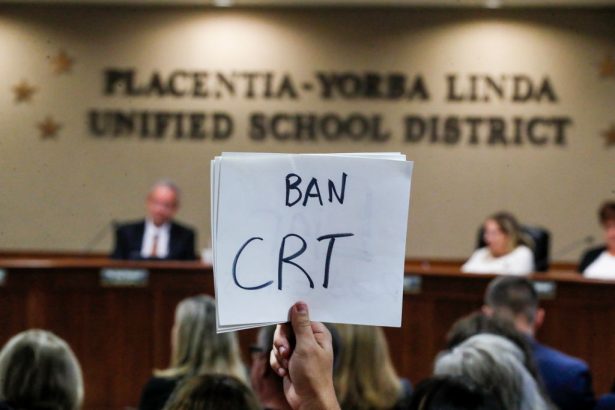
But Julia Martin, legislative director at Brustein and Manasevit, a law firm specializing in education, said there was no political upside for Cardona to wade any deeper into those waters.
“These issues, by their nature, are local issues,” she said. “There’s no way in many of these instances to come out and make a principled statement that doesn’t bother some people.”
The typically controversy-averse Cardona is a departure from the activist chiefs who have occupied the department since the No Child Left Behind era. Unlike many of his predecessors, Cardona doesn’t have a presidential mandate to implement bold reforms.
“We’re still in a crisis, versus coming out of a crisis back in 2009,” said John Bailey, a senior fellow at AEI. That’s when Arne Duncan became secretary under President Obama, with a far-reaching mission to incentivize states to embrace controversial reforms such as overhauling teacher evaluations and adopting Common Core standards.
Even if Cardona had such a mandate, Bailey said, the pandemic leaves him in the position of trying to provide a “rapid response during an unfolding crisis that continues to play out.”
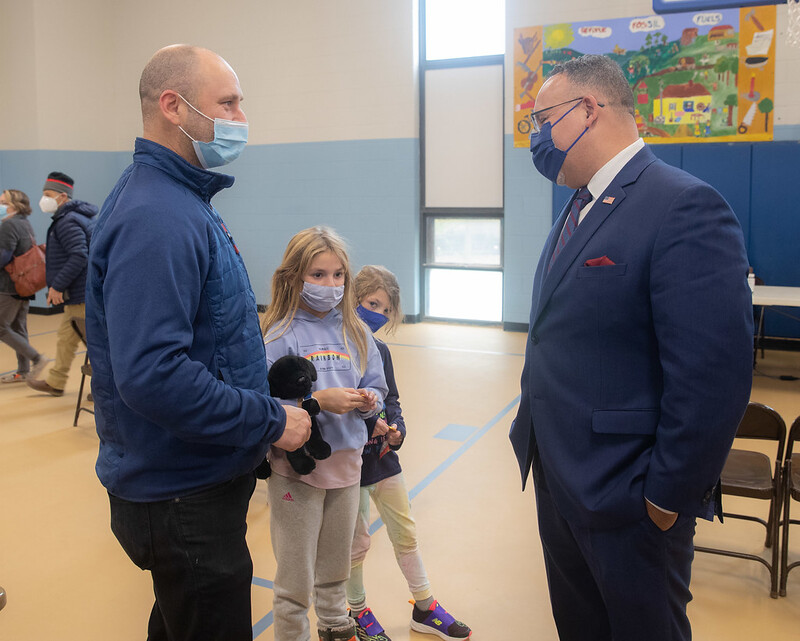
If the pandemic doesn’t continue to steal most of Cardona’s focus, he said he hopes to shift attention in 2022 toward issues a little closer to his heart: “teaching and learning.”
As someone who attended a technical high school in his hometown of Meriden, Cardona wants to see “better pathways” for students to two- and four-year schools and the workforce, especially with the jobs that will be created as a result of the $1.2 trillion federal infrastructure bill passed in November.
“There’s funding … unlike we’ve seen in the 20 years that I’ve been in education,” he said. “We have an opportunity here to really lift our field … and to give our students opportunities that they’ve never had.”
Lead Image: Education Secretary Miguel Cardona testified during a Sept. 30 Senate education committee hearing on school reopening. (Greg Nash / Getty Images)
Get stories like these delivered straight to your inbox. Sign up for The 74 Newsletter

